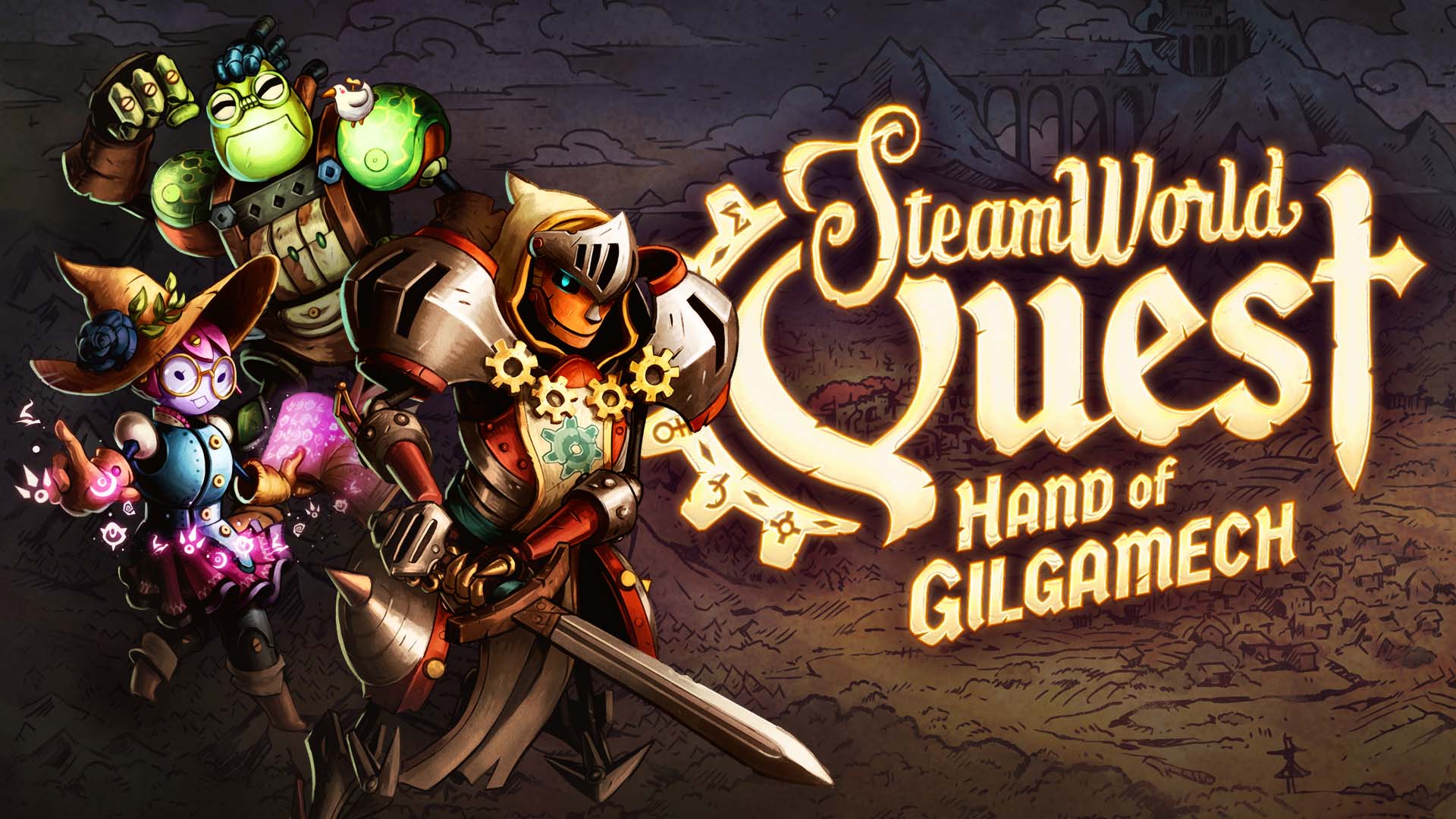
The SteamWorld franchise has been surprising in that an indie has become a franchise so quickly. Using loveable steam-punk robots the series has dabbled in mining deep underground in a frontier-town, to deep space with pirates. The latest game, SteamWorld Quest: Hand of Gilgamech, takes a rather interesting turn. Aside from the robots, everything seems to be within a fantasy setting. In addition this game is more focused on being a pure RPG – while past games have merely utilized stats. Is SteamWorld Quest a robotic royal flush, or is it just rusty junk?
SteamWorld Quest: Hand of Gilgamech
Publisher: Thunderful Publishing
Developer: Image & Form Games
Platform: Nintendo Switch (Reviewed)
Release Date: April 25th
Players: 1
Price: $ 24.99 (Review Copy Received)
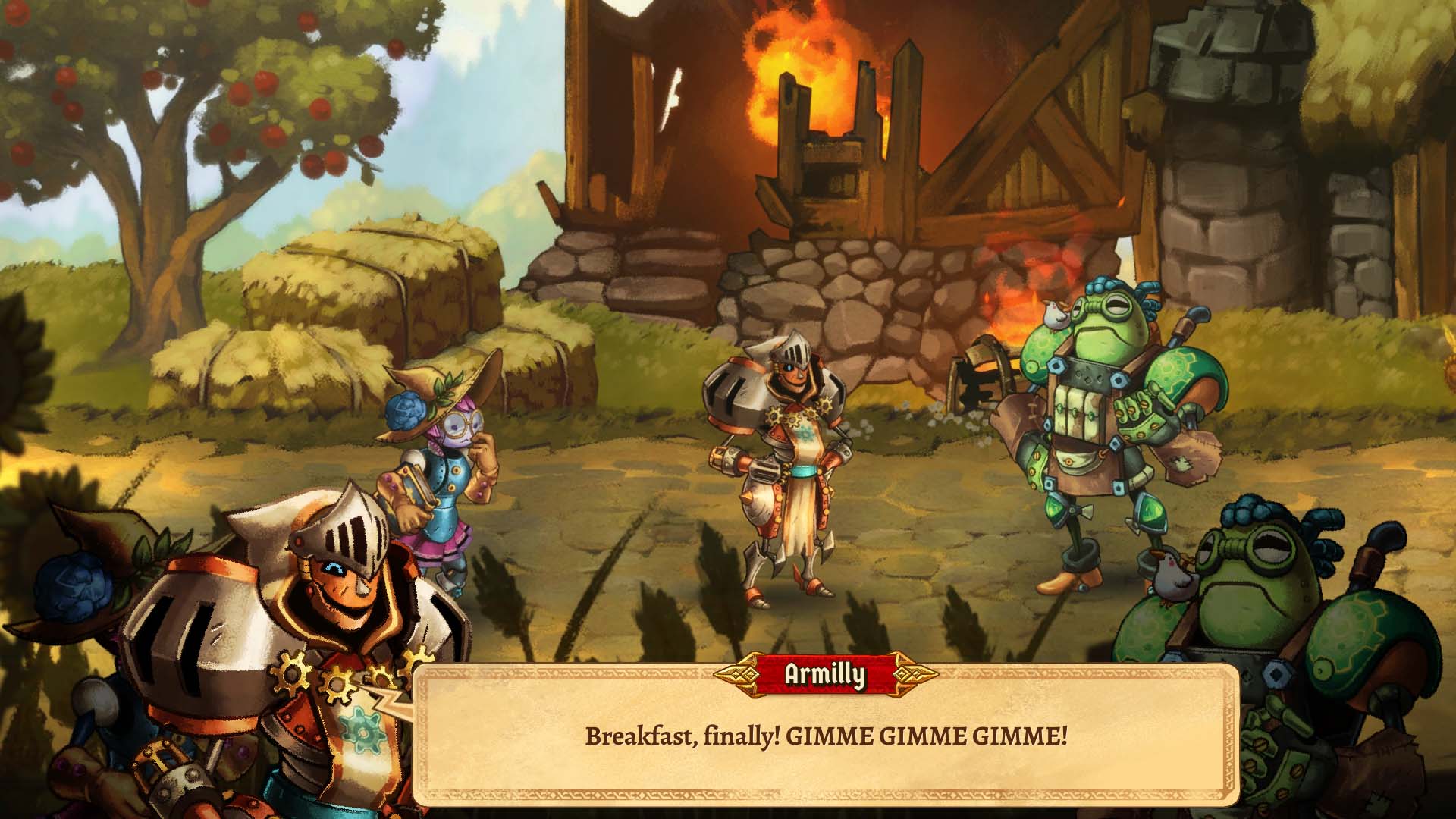
The story is intentionally cliché, the Dark Lord has sent his army to kidnap the lands heroes, leaving only wide-eyed aspiring hero Armilly, her friends, and those she meets along the way to get them back and prevent a terrible evil being brought back.
Armilly’s gung-ho enthusiasm is almost infectious, and plays well off Copernica’s straight-woman role. In fact, Copernica tends to be one of the few level headed character in a world of quirky characters. Likewise most character’s dialogue is designed to be humorous.
More than anything, it does make the world and characters more endearing and charming- clearly laying out their personalities and desires. While themes of heroism are frequently touched upon, the story does not get too heavy. This carries over to the game as a whole- light, simple, and charming. Though the gameplay department certainly has more in the tank than you would expect.

Combat is handled with a deck of cards, which cutely resemble old computer punch cards. Each hero has an eight card deck, with three active party members making it twenty-four in total – which allows you to attack, buff, heal and debuff. Any card without a cost generates Steam Pressure when used (SP), which can then be spent on more powerful skills.
This combines with a hand of six cards, being able to play up to three cards a turn and being able to discard and redraw up to two cards (your discard pile being shuffled into your deck when needed). This already gives a surprising depth to the strategy, without leaving you entirely at the mercy of luck. Of course, some cards may let you draw or redraw more cards.
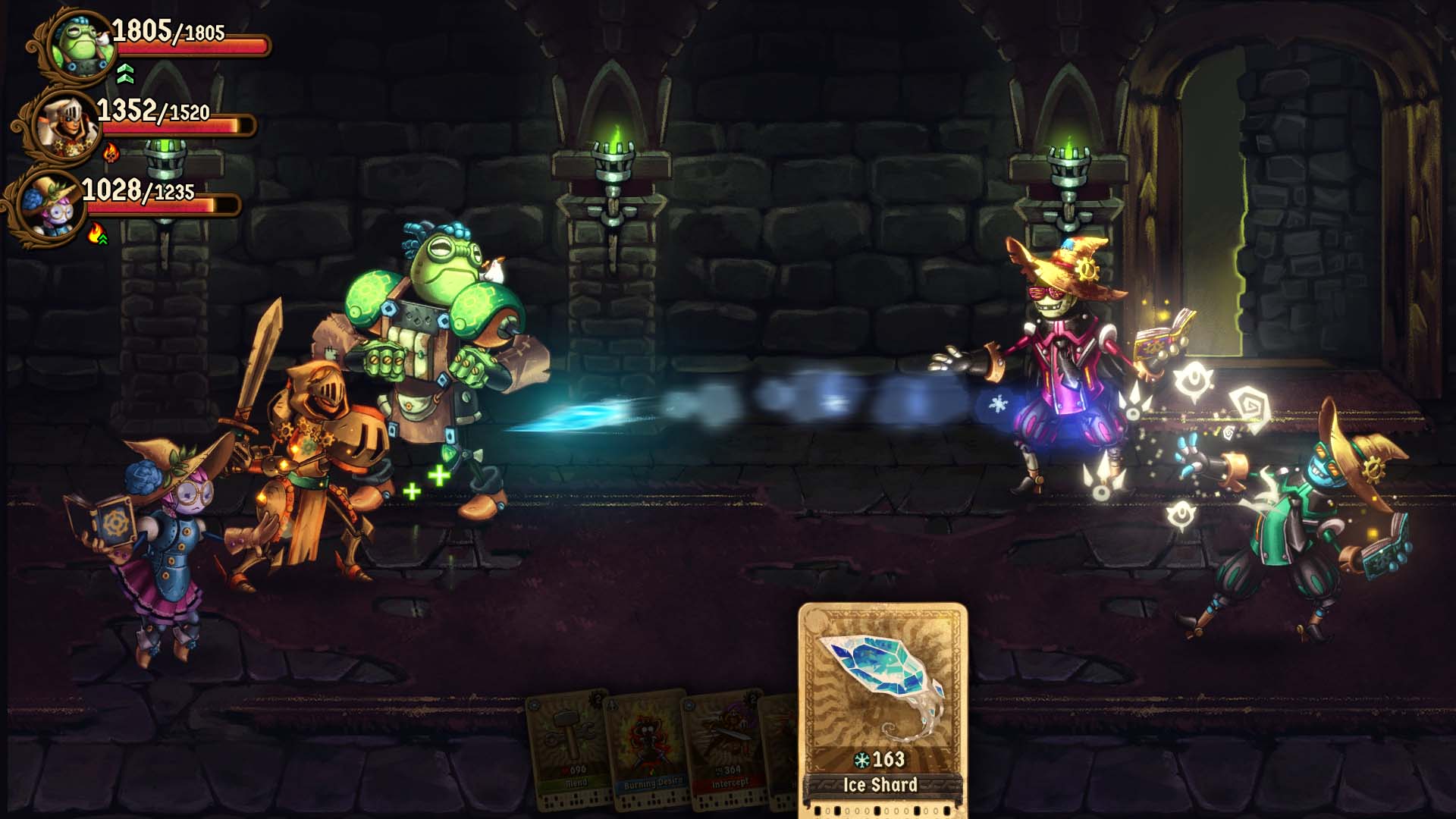
Aside from obvious synergies like soaking an opponent in water so your electrical and water attacks deal more damage, you also have access to Tag Team and Chain Attacks. Tag-Teams gain new effects if the previously played card was from a particular ally, while Chain Attacks activate based on a character’s weapon if all three cards played that turn belong to them.
I was surprised at the depth the game had, especially when I saw the only stats were HP, Attack, and Magic – along side elemental resistances. Building an individual character’s deck quickly becomes a full-blown strategic analysis as you balance out the cost of cards and how they all play off one another.
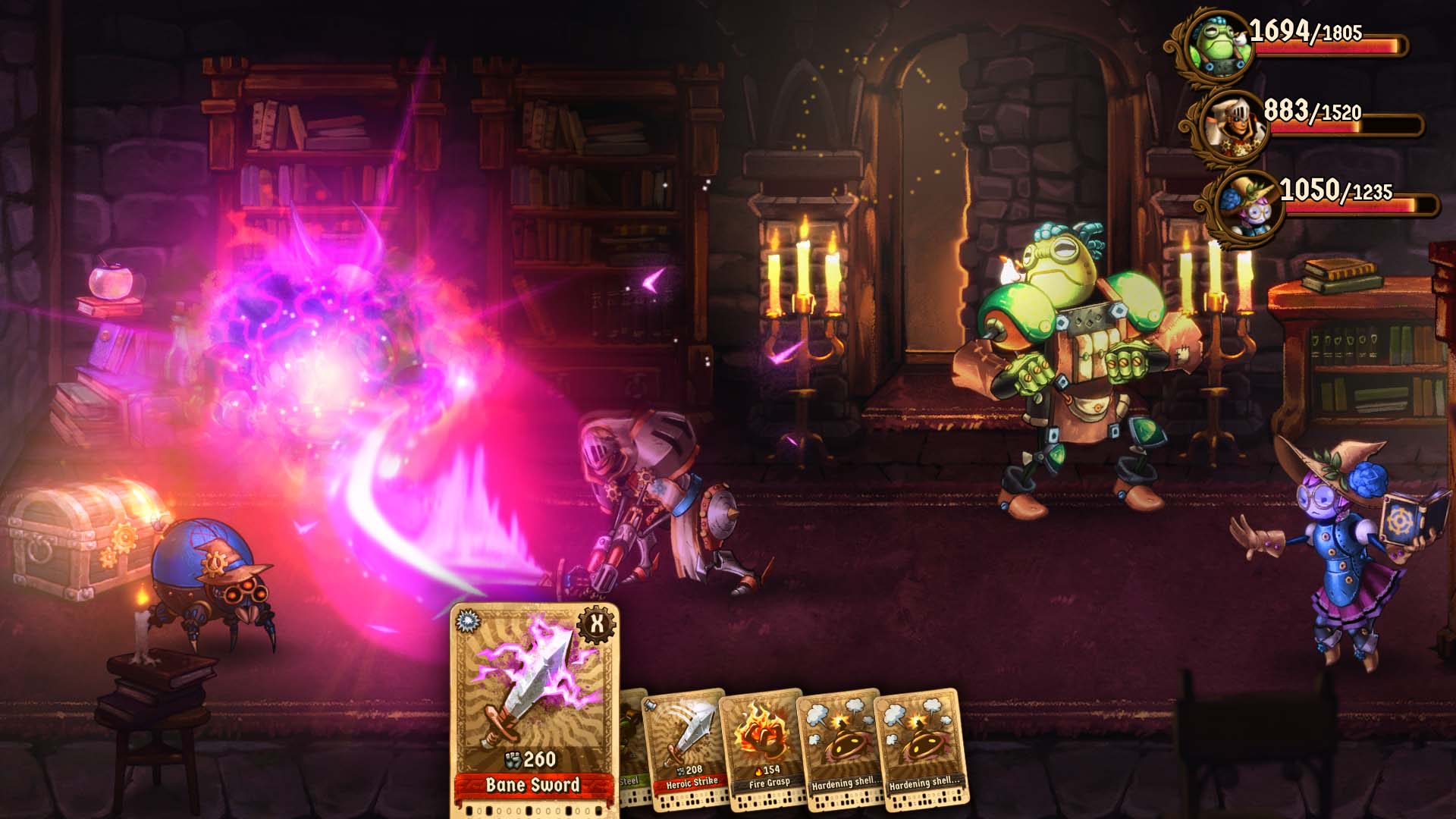
While enemies almost always go second in combat, they essentially react to what you do- such as healing their allies you just poured a lot of damage on to. Some enemies have their own SP, acting as a ticking clock to a more powerful move. As you have no defend command, you must carefully building your deck and manipulate your hand to ensure you can disrupt or wipe out these foes.
Difficulty was an odd duck. I initially felt normal was too easy for the first few hours, only when I changed up to hard mid-game I got my mechanical teeth kicked-in via a rough introduction to self-destructing enemies. After some more tinkering it seems that while normal can be easy, aside from bosses, hard difficulty shows that it is individual enemy types that can be the challenge.
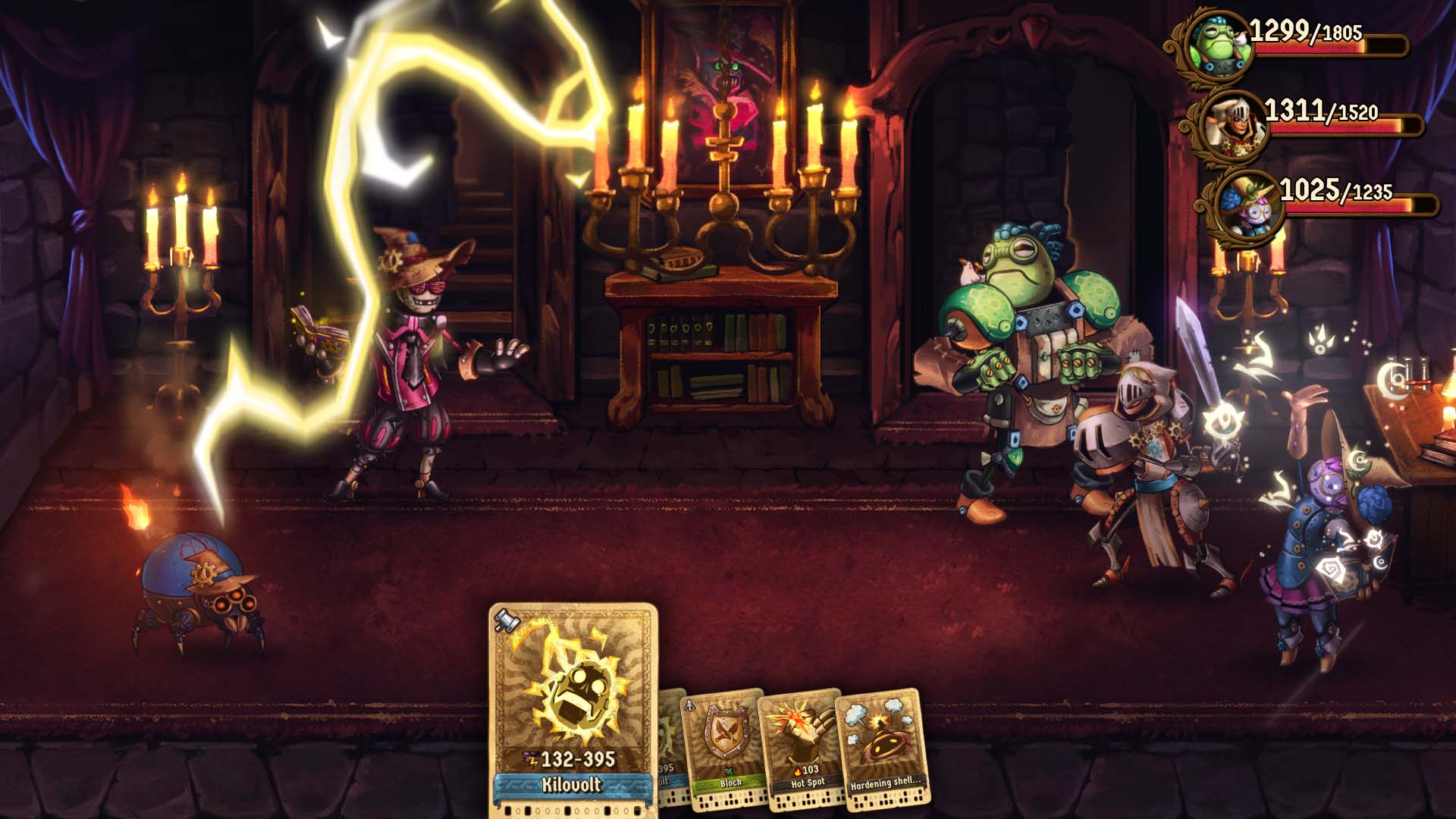
This caused the game’s difficulty to ping-pong around but nonetheless exposed a flaw – combat is a tad slow. While you can speed up animations, the number of turns can take a long time against everything except the weakest mobs in that area. While this seems annoying at first, this does tie in with how dungeon exploration works.
Each chapter essentially takes place in a dungeon. With nice looking-albeit square rooms with the occasional piece of decoration to stop it being a box you can walk straight across. The pathways between them do become more complex however- with hidden treasure, dungeons within dungeons, and more complex layouts.
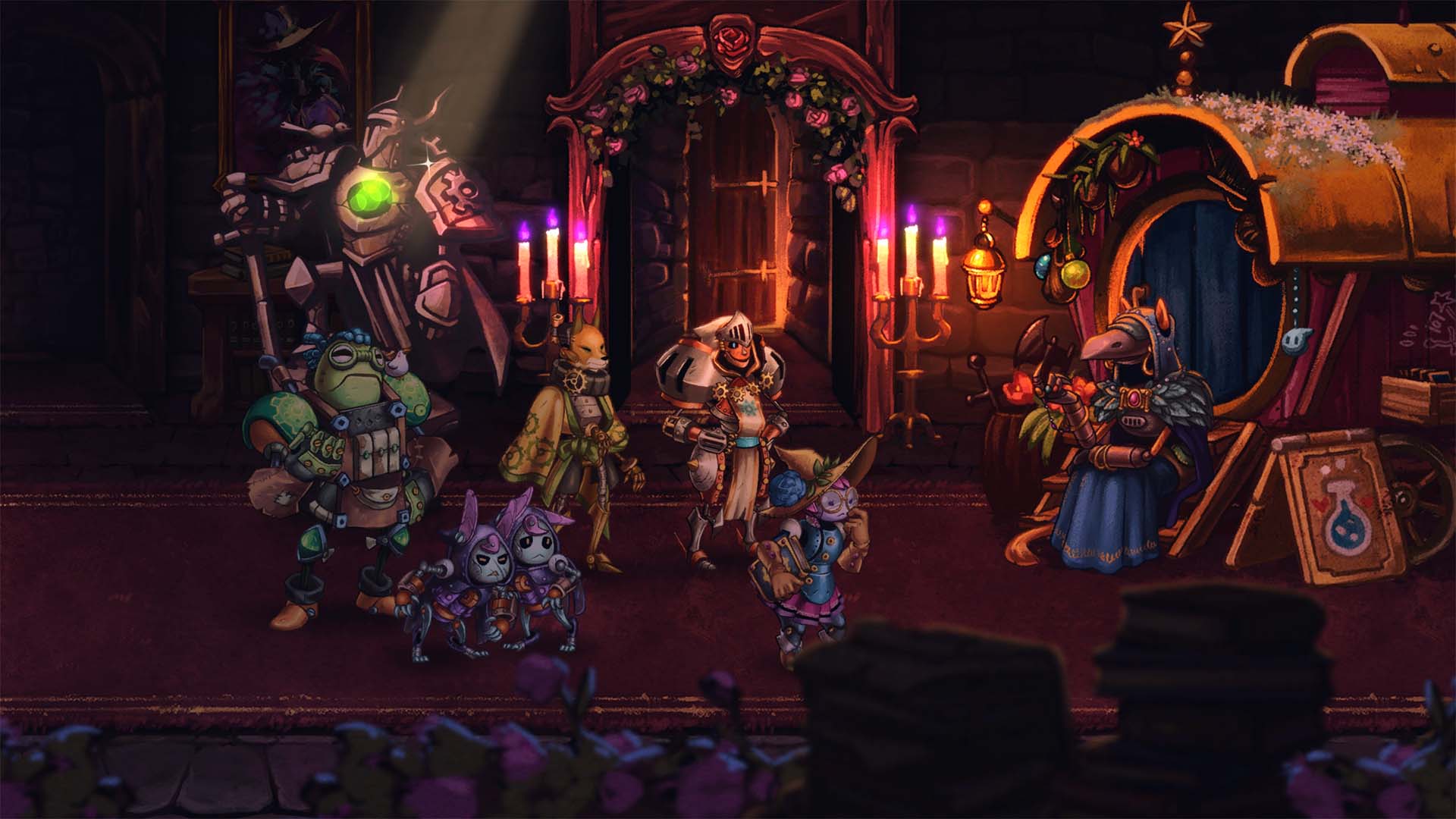
Within dungeons you can find Hero Statues, which may sound familiar as they fully heal you – at the cost of repopulating all defeated monsters. Being you can only heal in battle or with healing items, it feels like the game is encouraging you to explore as much of the level as possible before the boss. Even if you cannot, the extra enemies you fight earn gain you extra EXP and more.
Enemies can drop materials and money used in crafting and upgrading new cards, along with buying new weapons and accessories. While I had enough money and resources to buy a few new pieces after fighting all enemies in a chapter, I found myself grinding and going down to normal to get a few pieces to give me an advantage. Otherwise, money was scarce.
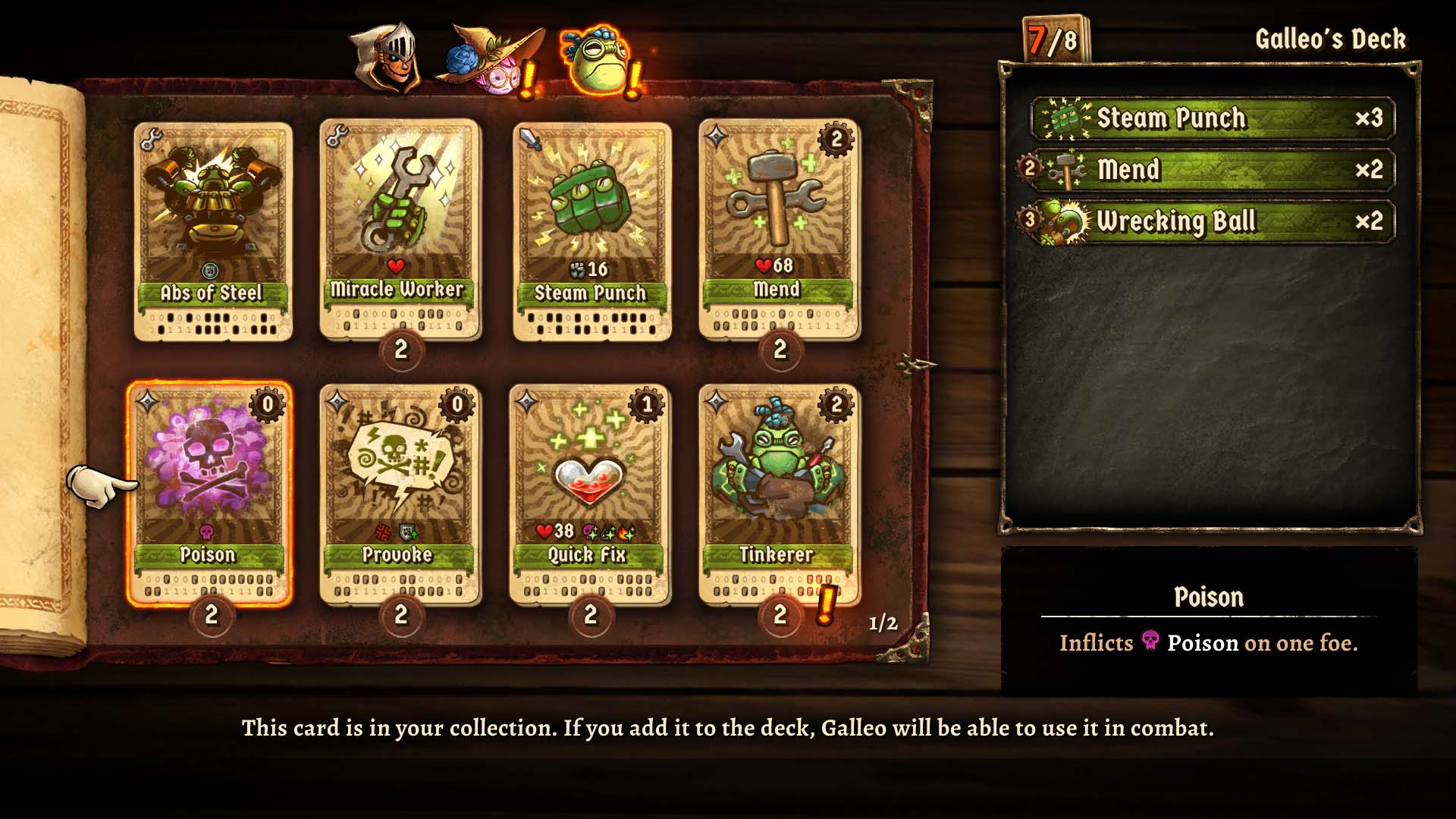
Going back to balance, it does feel like SteamWorld Quest expects you to replay levels and clearing out the enemies- possibly to find those hidden treasures you may have missed. I would often go into new chapters and get a sharp boost of EXP, almost as though I was under-levelled. As aforementioned, battle difficultly came down to the enemy type or if it was a boss.
While combat can take many turns and its difficulty can wildly vary- the various strategies and deck-building is fascinating. It is simplified, but far from simple. By the time you have your fourth party member, the game truly starts.
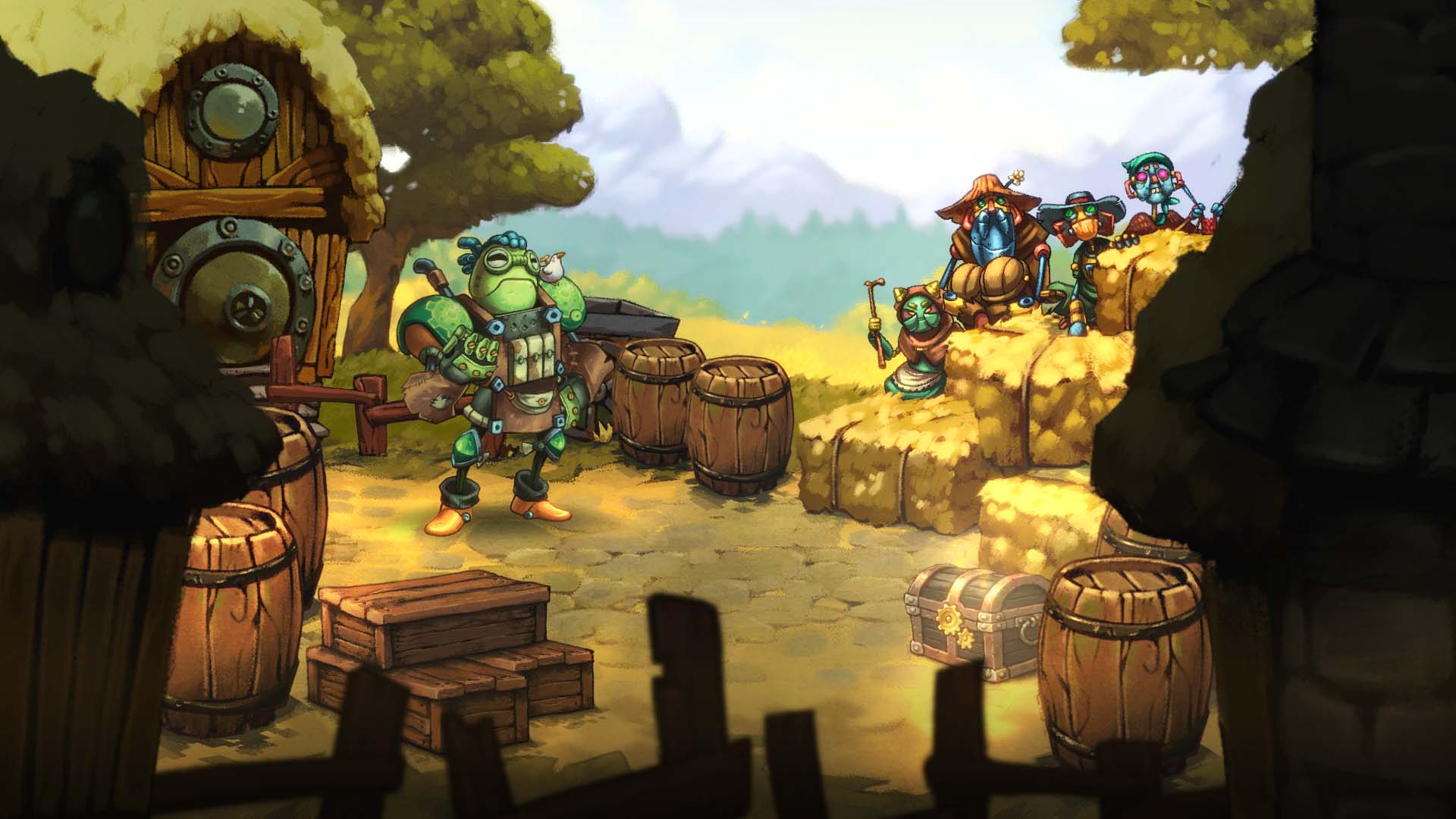
The game attempts to imitate a storybook, with everything having a painted texture on them. Trees can become a mush of green, though some details do survive. This includes characters as well. Not only do the robots have organic components like flowers, furs, small animal companions or even animal limbs, but living organic creatures also appear. All giving this SteamWorld game its own style from the rest of its kin.
The character designs for the robots are creative, much like past SteamWorld games. This time around there seems to have been even more freedom, with some non-humanoid robots and even something akin to beast-men incorporated into the design of some.

Animations are simple motion tweening, but it never feels out of place. The sprites are given a slight amount of warping and stretching to help sell heavy impacts of attacks, accompanied by screen-shaking. The only real downside is that there are rare moments highlighting a card in your hand can obscure the enemy’s status bar. Though you can freely examine enemies in more detail to still find it.
The music sounds suitably “fantasy RPG-y”, with classical instruments. The themes are catchy enough I would be able to pick them out from similar game OSTs, but perhaps for a month or so. A few stock sound-effects are recognizable but perfectly suited to the job. Most of the game’s voice acting also relies on Banjo-Kazooie babble. Not only does it sell the personalities but it never grew annoying.
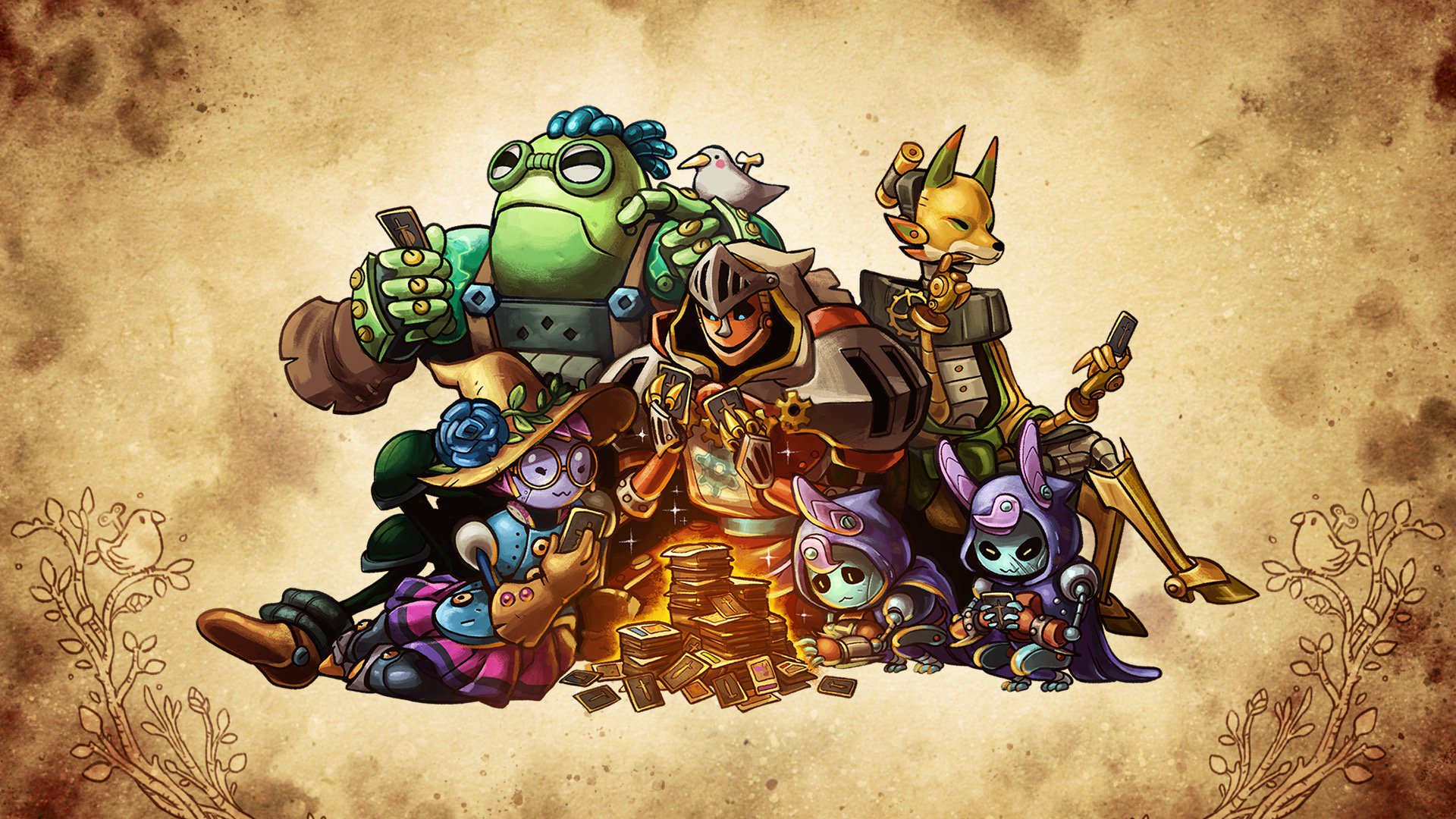
SteamWorld Quest: Hand of Gilgamech has stripped away anything unnecessary and made a solid RPG. While a few more flairs would have been nice and difficulty balance can be a bit off, it is still an excellent RPG that encourages players to strategize when building a deck to prove their mettle.
SteamWorld Quest: Hand of Gilgamech was reviewed on Nintendo Switch using a review copy provided by Thunderful Publishing. You can find additional information about Niche Gamer’s review/ethics policy here.